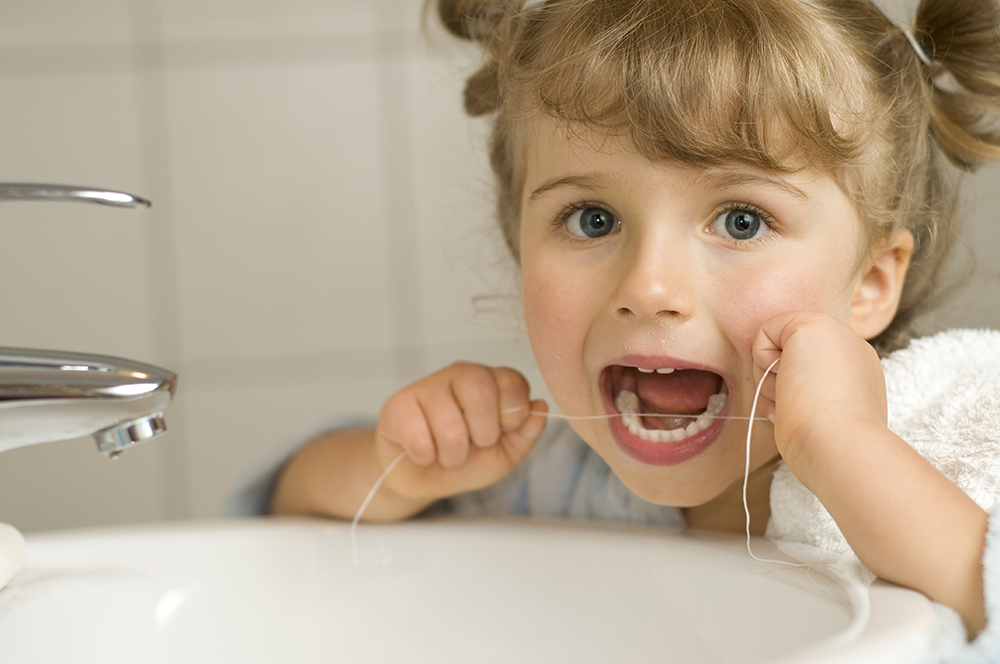When Should My Child Start Flossing?
Most adults know how important it is to floss every day. But not everyone realizes that even the tiniest mouths can benefit from flossing as well. Maintaining proper oral hygiene practices from a very young age will lay the foundation for a lifetime of healthy smiles. Here’s all you know about flossing and when your child should start!
Why Care for Baby Teeth?
Even though baby teeth won’t last forever, keeping them healthy will reflect on the health of the adult teeth developing behind the scenes. These tiny chompers help your little one bite and chew with ease, allowing for proper nutrition. They also play a significant role in speech development and the healthy growth of the jaws and muscles.
Baby teeth maintain the space needed for the permanent teeth developing behind the scenes and serve as guides when they are ready to come in. Losing a baby tooth too early can cause the surrounding teeth to shift and tilt into the gap, resulting in misaligned adult teeth or a crowded mouth. If that happens, your child will likely need orthodontic treatments down the road.
When Should Your Child Start Flossing?
The best time to start flossing is as soon as your little one’s teeth begin to fit closely together, typically between the ages of two and three. To make sure your child is ready, slide a strand of floss between two teeth. If it sticks a little, it’s the perfect time to start. If in doubt, talk to your trusted team at Smile Explorers Pediatric Dentistry. We are here to offer flossing tips to ensure your little one’s smile is off to a great start!
How Does Flossing Help Your Child’s Smile?
Brushing teeth consistently and correctly helps remove plaque from around the gum line, preventing it from hardening to tartar. However, those hard-to-reach areas between the teeth often need a little extra help. In addition to removing plaque, flossing helps get rid of bacteria and food debris from between your little one’s teeth. When coupled with brushing, flossing significantly decreases the risk of developing tooth decay and gum inflammation. Establishing proper brushing and flossing habits early on will ensure your child continues these mouth-healthy behaviors into adulthood.
Flossing Best Practices
One of the best ways to floss is called the spool method or the finger-wrap method. First, cut off a strand of floss around 18 inches long. Lightly wrap each end several times around your middle fingers. Next, slide the floss gently between two teeth while being careful not to snap it down on the gums. Curve the floss around each little pearly white and carefully move it up and down the sides. As you move from one tooth to the next, use a fresh piece of floss.
You’ll need to floss your children’s teeth until they can do it themselves, typically around 8-10 years old. Make sure to visit Smile Explorers Pediatric Dentistry for a demonstration on how to best care for your little one’s teeth.
Quality Preventive Dentistry in Glendale, AZ
Contact Smile Explorers Pediatric Dentistry to learn more about establishing proper oral hygiene practices for long-term healthy smiles. We look forward to working alongside you to ensure your child enjoys a lifetime of healthy, happy smiles. Call us and schedule your appointment today!



